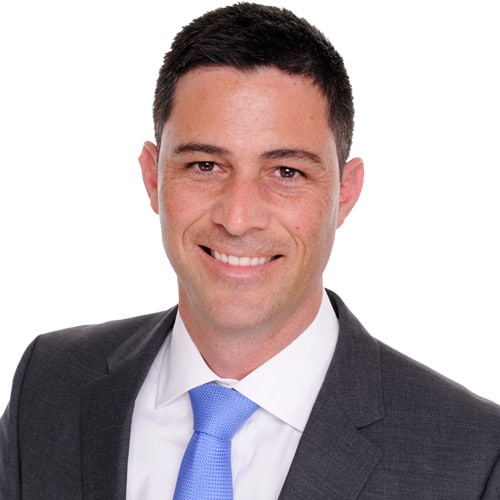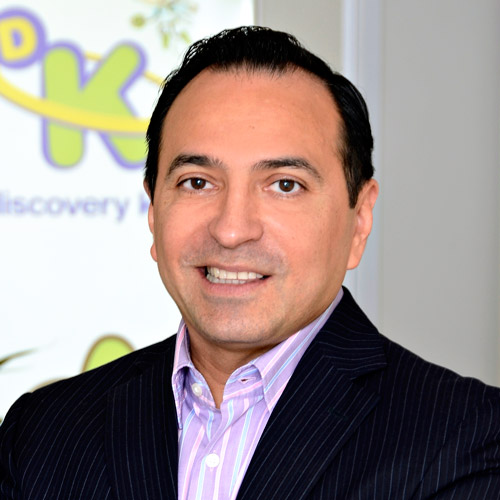
Roxanne Martinez has been with Liberty Mutual for more than a decade because, as she says, there’s no shortage of challenging work. And Martinez thrives on a challenge.
Originally planning to practice law, Martinez took a role in management consulting after law school, and developed an area of expertise that led to her first human resources role in the early 2000s.
In 2005, she joined Liberty Mutual as the human resource manager for business markets. She went on to hold two other roles on the commercial side where she worked on major industry acquisitions and helped build the commercial insurance business. In 2015, Martinez stepped into her current role as vice president and chief talent officer in the personal insurance division.
As she has progressed throughout her career, Martinez has found that having a focus in HR has provided her with diverse and unique puzzles and problems to solve. “That is the kind of environment I thrive in. It really isn’t about the title; it’s about the work.”
At Liberty, Martinez is responsible for the US consumer market recruitment team, HR business partners across the country, a talent management and strategy team, and enterprise services, which covers the consumer markets real estate portfolio, workers’ compensation, and safety and business continuity. She also takes on critical projects like diversity inclusion and leadership effectiveness. She oversees close to two hundred employees, including nine direct reports.
Martinez says she’s particularly proud of her work in the last year, having seen the consumer markets business advance its market position by fostering innovation.
“We’ve actually been able to work on incubating our own companies, which has been a lot of fun and a great HR challenge,” she says.
“I feel really engaged because I think there’s a lot to do here from a talent perspective that is forward thinking.”
Roxanne Martinez
Martinez worked with the diversity inclusion office to launch Amigos at Liberty, the employee resource group.
“We’ve been able to highlight and partner with the business on advancing our business efforts in the Hispanic and Latino market,” she says. “It’s been nothing short of amazing for me to be able to work with the company in that capacity.”
She’s a big believer in leveraging a host of leadership styles—from coach to visionary—to best serve her teams. She encourages them to come forward not just with problems, but also with ideas for holistic solutions.
For example, Martinez is part of a company-wide initiative to address the wave of retiring baby boomers. Nearly 23 percent of the company’s workforce are baby boomers, and 6.5 percent are older than sixty. Martinez expects 1,000 to 3,000 of the company’s more than 50,000 employees to retire in the next two years.
Liberty set up a strategic workforce planning team to develop and expand flexible work arrangements. By breaking from the traditional in-office, forty-hour workweeks, the company hopes to retain more boomers who want to scale back, Martinez says. She’s also working on a sixteen-week internship program to help career-break professionals return to
the work force.
While she’s focused on retaining and recruiting talent, Martinez feels she has found her stride in her current role.
“The reason I stay is because I’m still learning. I feel like my teams are making an impact each and every day, and I’m still growing as leader,” she says. “I feel really engaged because I think there’s a lot to do here from a talent perspective that is forward thinking.”
Continual learning is high on her priority list. While she’s glad she has her law degree, Martinez sometimes wishes she had completed a joint MBA-law degree, which she says could have helped her assimilate with some of the companies where she’s worked.
“Maybe I can do the MBA when my daughters are in college, and we can do it together,” speculates Martinez, mother of fifteen- and eleven-year-old daughters. “They keep me busy.”
Talent in 10 Years
HR leaders will need to continuously evolve the way they manage talent as technology and social media continue to transform the way people work, Roxanne Martinez says.
For example, some Liberty Mutual employees are already receiving real-time feedback from customers, activating leaders to frequently recognize employees’ accomplishments and provide timely coaching.
“It’s not just about the performance review at a certain point in time; performance is constantly nurtured and coached each and every day on the front line,” Martinez says.
Technology also is changing where and how people work. Martinez expects the HR industry to increase focus on flexible work arrangements, virtual team management, and balancing full- and part-time workers.
“We’ve been able to highlight and partner with the business on advancing our business efforts in the Hispanic and Latino market,” she says. “It’s been nothing short of amazing for me to be able to work with the company in that capacity.”
She’s a big believer in leveraging a host of leadership styles—from coach to visionary—to best serve her teams. She encourages them to come forward not just with problems, but also with ideas for holistic solutions.
For example, Martinez is part of a company-wide initiative to address the wave of retiring baby boomers. Nearly 23 percent of the company’s workforce are baby boomers, and 6.5 percent are older than sixty. Martinez expects 1,000 to 3,000 of the company’s more than 50,000 employees to retire in the next two years.
Liberty set up a strategic workforce planning team to develop and expand flexible work arrangements. By breaking from the traditional in-office, forty-hour workweeks, the company hopes to retain more boomers who want to scale back, Martinez says. She’s also working on a sixteen-week internship program to help career-break professionals return to the work force.
 Call to Action with Maribel Hines
Call to Action with Maribel Hines
Seek meaningful work. What kinds of projects and experiences create a sense of fulfillment? Meaningful work is not just about employee engagement; it’s about employee satisfaction. Meaningful work can impact and be tied to your core values, beliefs, sense of purpose, and even your calling. Figure out what that is for you, and look for ways to surround yourself with opportunities to engage in these activities regularly.
To grow, immerse yourself in challenging work and projects. Roxanne Martinez seeks challenging opportunities, and guides and surrounds herself with a team that strives to make an impact each and every day. She recognizes that she is still learning and growing. This astute level of self-awareness is one mark of a true leader.
Be flexible in your approach to leading and communicating with others. There is no one-size-fits-all style of communicating, and Roxanne knows that to get the best from her team, she needs to tap into their unique motivators. On any given team, there are people with a variety of strengths, backgrounds, work styles, and personalities. To lead most effectively, a leader needs to recognize how each team member communicates and contributes best—using this knowledge to modify his or her style to accommodate the needs of each team member and elicit their best possible contributions.
To apply a flexible style, start by asking yourself (and each team member) questions such as:
What drives and motivates you?
How best can I help you succeed?
How much direction do you need from me?
Do you prefer to make decisions autonomously, or would you rather obtain my insights first?
Do you prefer frequent discussions around progress towards goals or would you rather come to me only when there are key issues to be addressed?
How much feedback do you prefer to know whether you are on the right track?
Knowing answers to the above will help you as a leader adapt your style to the person and situation, which ultimately results in a more motivated and engaged team.
Bring solutions and ideas to the table. We encounter challenges every day in our work and our communities. Demonstrate leadership by bringing ideas for holistic solutions to problems, as Roxanne points out. Quickly move past “why” questions that mainly focus on the reason or problem in general. This wastes important time that you could have invested to solve a problem.
Instead, ask yourself questions such as:
How can I solve this or address this?
What are all the possible options?
What would be the first step to solve this problem?
What kind of preparations will be necessary?
What other considerations are important here?
Use such questions to switch your mind into a more resourceful state, and you’ll achieve greater success as a problem solver. ”

